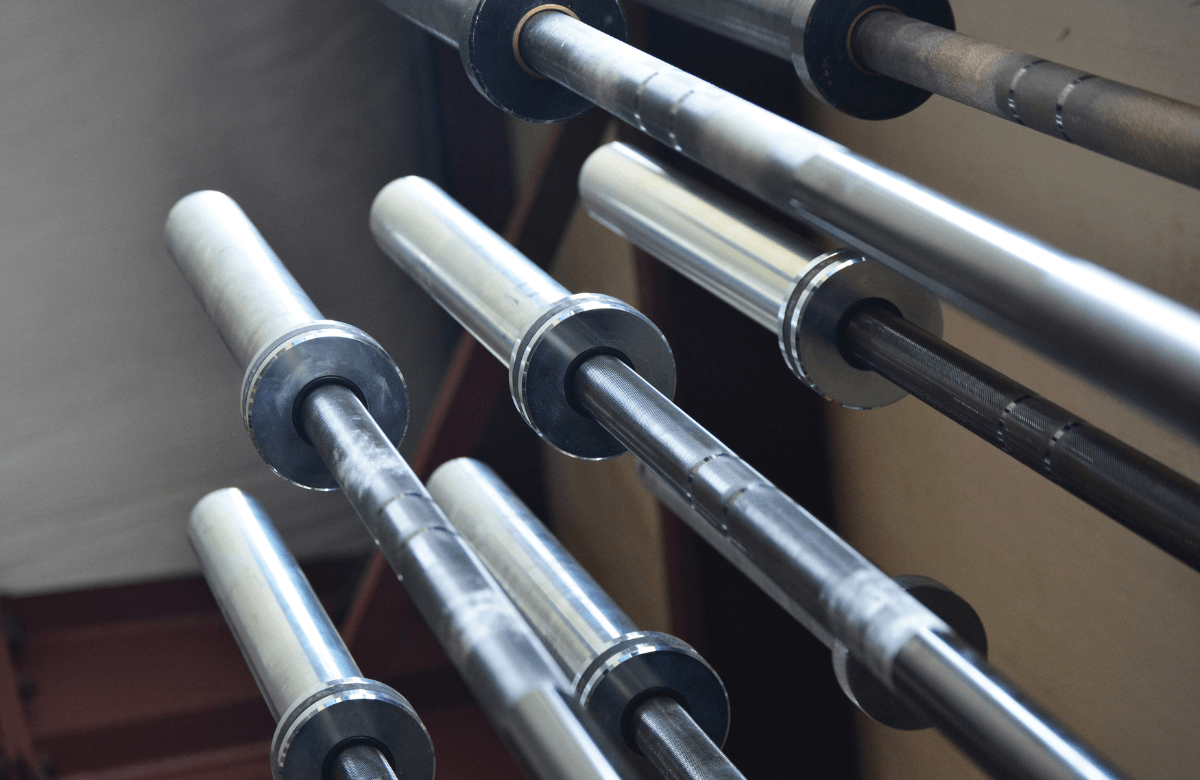Deadlift bar vs. stiff bar, which do you prefer? Selecting the suitable barbell can help you get the most out of your session and improve your lifts. So, which option should you purchase when fitting out your home gym?
Let’s look at the critical differences between the two options, the advantages, the disadvantages, and more.
Before optimizing your lifts or creating the perfect home gym, you’ll need to know the difference between the stiff bar and the deadlift bar. Each barbell has advantages, disadvantages, and best-use cases. Let’s take a deeper look.
Jump to:
- Deadlift Bars Are Longer
- Stiff Bars Have Thicker Shafts
- Deadlift Bars Don’t Have Center Knurling
- Stiff Bars Have Higher Tensile Strength
- Deadlift Bars Have Smaller Loadable Sleeves
- They’re Used in Different Competitions
- Stiff Bars Are Less Suited for Sumo Deadlifts
- Deadlift Bar vs. Stiff Bar: Pros and Cons
- Which Is Better for a Home Gym?
- Frequently Asked Questions (FAQ)
What Is a Deadlift Bar?
The standard deadlift bar is a specific type of barbell with a more narrow construction and is intended for heavy loads. The deadlift bar weight is usually 45 lbs. The bar has more ‘whip,’ which allows it to bend more before the weight leaves the ground. More bends enable the lifter to move more weight. These bars also have more aggressive knurling for better traction.
What Is a Stiff Bar?
Stiff bars, or power bars are one of the more common barbells found in gyms and weightlifting competitions. They provide less ‘whip’ and have central knurling. They have a more rigid design that allows them to be used for lifts like the squat, deadlift, bench press, and more. Stiff bars can be commonly seen for Olympic lifting.

Deadlift Bars Are Longer
The first noticeable difference between the two pieces of equipment is that deadlift bars are typically longer. Deadlift bars usually have a longer bar shaft, the extended middle portion of the barbell that the lifter grips.
- Deadlift bars range around 90 inches in length
- Deadlift bars have a 56-inch shaft.
- Stiff bars are about 86 inches.
- Stiff bars typically have a 51-inch shaft.
Deadlift bars are more extended, allowing lifters to pull more weight off the ground during the exercise. Lifters can pull more slack out of the barbell as the weights are further away, causing more barbell bends.
Stiff Bars Have Thicker Shafts
The deadlift bar shaft is often thinner than stiff bars, which allows the barbell to bend more at heavier loads. This allows for heavy deadlifts, heavier weights, and heavier lifts.
- Stiff bars have a shaft thickness of around 29mm
- Deadlift bars have a shaft thickness of about 27mm
Additionally, the thinner shaft design of the deadlift barbell provides extra grip. Thicker barbells are harder to hold onto during heavy pulls. Lifters with small hands or short fingers are more likely to be affected by and notice differences in thickness.
Deadlift Bars Don’t Have Center Knurling
Deadlift bars don’t have central knurling, as it’s not used when performing the deadlift. The knurling on a barbell creates friction that allows the lifter to grip it better or hold it in place on its back.
Stiff barbells include center knurling, which is used for back squats and bench presses. Using a deadlift bar for squats might be ill-advised, as there’s a greater risk of it slipping off your back than a stiff bar.
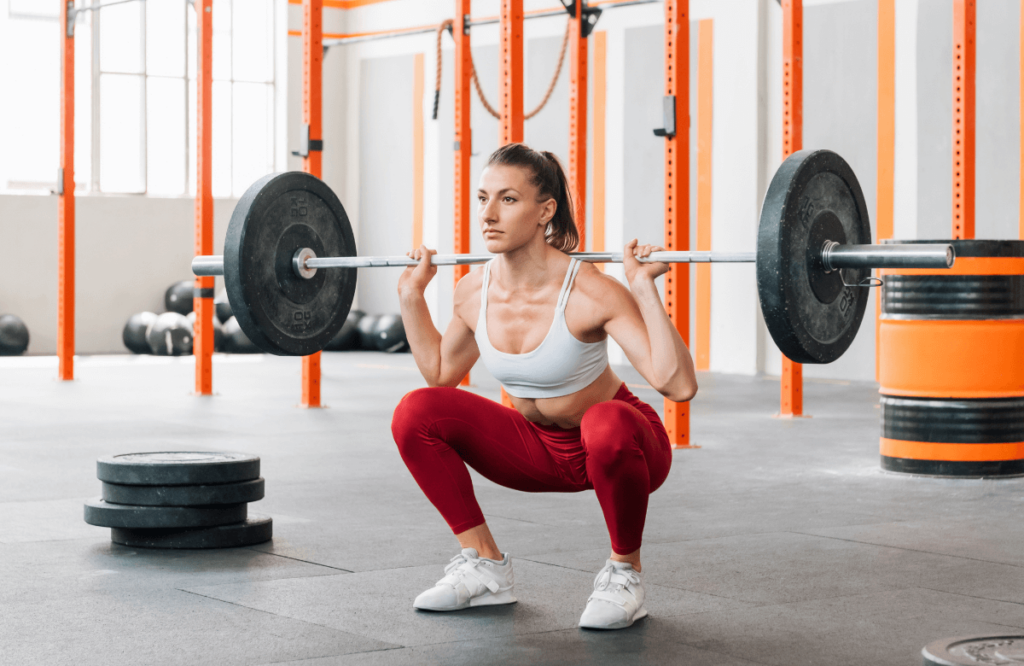
Stiff Bars Have Higher Tensile Strength
Tensile strength measures how much pressure the steel barbell can withstand before breaking. It’s typically measured in PSI or pounds of force per square inch. Deadlift bars generally are thinner than stiff bars, resulting in lower tensile strength.
However, lower ratings don’t mean the barbell is necessarily weaker. The lower tensile strength of a deadlift bar allows it to bend more. This construction makes lifting the weight off the floor easier, as you can pull the barbell higher up before the plates leave the ground.
That said, lower ratings can indicate how much you can load on the barbell. Deadlift bars tend to have 165,000-190,000 PSI, while stiff bars have around 195,000-205,000 PSI.
Deadlift Bars Have Smaller Loadable Sleeves
To add to the point above, the lower tensile strength of the deadlift bar limits how much weight you can load. In fact, the barbell is constructed to limit how many plates you can add on either side.
- Deadlift bars typically have loadable sleeves around 15 inches
- Stiff bars usually have loadable sleeves between 16-17 inches
Deadlift bars typically have shorter loadable sleeve length at either end than a stiff bar. The shorter sleeve length can make it difficult if you want to pull mass amounts of weight, like 700 lbs or more. Professional weightlifters typically use thinner plates to compensate for the shorter sleeves on a deadlift bar.
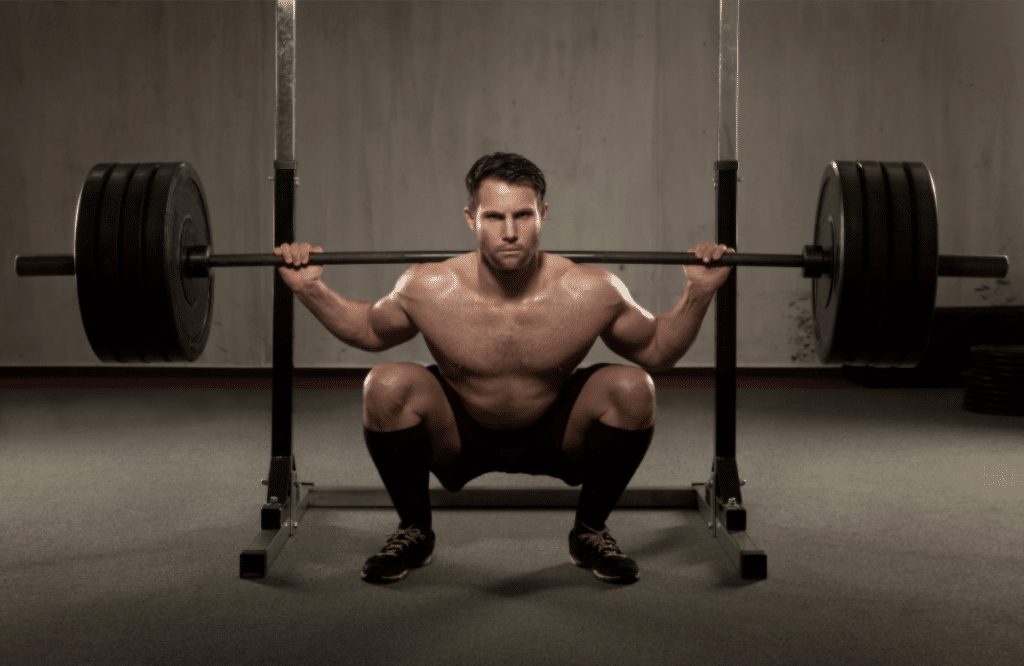
They’re Used in Different Competitions
Different weightlifting federations have varying rules, regulations, and equipment. For instance, the IPF and USAPL only use stiff bars for competitive events. Federations like the USPA use dedicated deadlift bars for deadlift events.
It might be best to plan ahead and train using the required barbell if you plan to compete in an event hosted by one of these federations. Training with the specific barbell can give you a leg up and help you feel more comfortable on competition day.
Stiff Bars Are Less Suited for Sumo Deadlifts
It’s advised to use deadlift bars for sumo deadlifts. It’sPulling the weight off the floor when executing a sumo deadlift is more challenging. Sumo deadlifts require more bend in the barbell as it allows you to move the bar more before the plates leave the ground. The stiff bar doesn’t have as much bend, which makes the lift much more challenging.
Deadlift Bar vs. Stiff Bar: Pros and Cons
As you can tell, each barbell has significant and subtle differences. Let’s dissect this information further to help you understand each option’s advantages, disadvantages, and best-use cases.
Deadlift Bar Advantages
- You can lift more weight: The deadlift bar construction helps you pull heavier loads off the floor. The design lets you lift the slack out of the bar in the initial movements, reducing the total range of motion and necessary energy.
- Easier grip: Deadlift bars are thinner than stiff bars, which makes them easier to grip, regardless if you use overhand, hook, or mixed.
- Better for a wider stance or sumo deadlift: The space between the shaft and the sleeve on the deadlift bar is wider, making it easier to take a sumo-style stance. The sumo deadlift reduces the range of motion even further and may help you pull more weight.
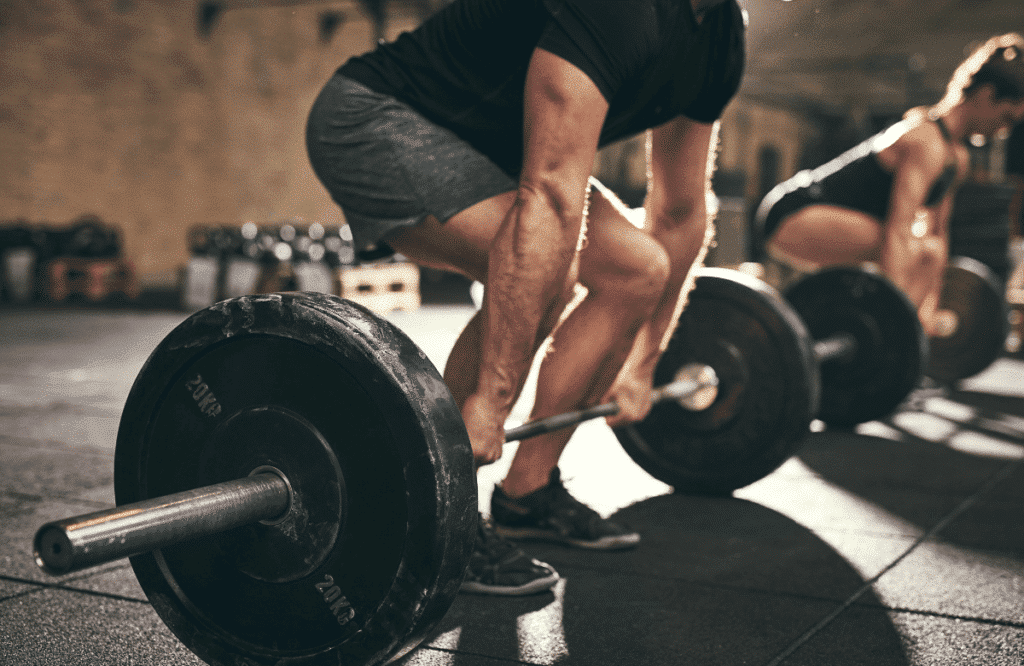
Deadlift Bar Disadvantages
- Not suited for back squats: Deadlift bars lack center knurling, which makes them less stable for back squats. Additionally, the deadlift bar is more extended, making it challenging to maintain proper form between reps.
- Less stable constructions: Deadlift bars have more whip than stiff bars, which might make them feel unstable at the top of the movement. The plates can move, spin, or sway at the top of the lock-out causing you to potentially lose balance or focus.
- It isn’t used in some powerlifting federations: Many federations use stiff bars for all of their events, while other federations use the deadlift bar for deadlift competitions. You’ll need to check the rules of your competitions ahead of time to determine which bar to train with.
- Not as good for isolating deadlift strength from the floor: The deadlift bar allows you to pull more slack out of it during the initial movement. This causes it to be less ideal for isolating the beginning portion of your technique. You might need to use variations or accessories if you only have access to a deadlift bar.
Stiff Bar Advantages
- You can isolate the bottom of the deadlift technique: The stiff bar has less bend and whip, which allows you to isolate the bottom portion of the deadlift technique. Less bend lengthens the deadlift’s range of motion because you can’t pull as much slack out of the bar.
- Better suited for squats: The stiffness and center knurling of the stiff bar make it better suited for squats. The plates may not spin or sway as much, which can also help you keep your balance during the squat.
- Helps with the bench press: Do you have trouble centering the barbell during the bench press? Use the center knurling of a stiff bar the next time you’re lifting. Many lifters prefer the center knurling for this application.
- Easier to store: Stiff bars are shorter than the deadlift bar, which makes them easier to store, especially if you have a home gym or limited space.
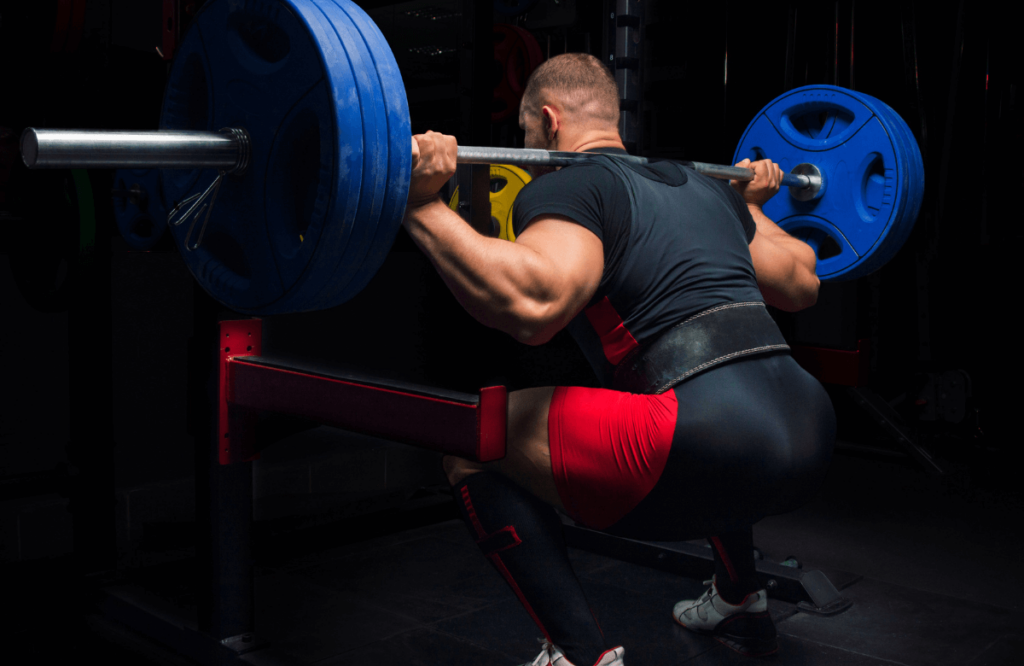
Stiff Bar Disadvantages
- You can’t lift as much weight: Unlike the deadlift bar, the stiff bar is shorter and has less whip. This can prevent you from pulling as much weight and affect your training for competitions. It might be less suited fore conventional barbell deadlifts.
- More challenging to grip: The stiff bar shaft is thicker, making it harder for some lifters to grip. Lifters with lower grip strength or smaller hands will notice the size difference especially.
- Can scratch your neck during a front squat: It’s possible that the light center knurling on the stiff bar catches your skin and scratches it during specific movements, like the front squat. Scratches can vary from a minor nuisance to an injury that poses a health risk.
Which Is Better for a Home Gym?
So, you’ve cleared out your garage and purchased a squat rack, but now you’re stuck—deadlift bar or stiff bar? Although either barbell will allow you to perform deadlifts, squats, or presses, purchasing the right one can help you achieve your fitness goals faster.
Let’s look at when it’s better to purchase a deadlift bar, stiff bar, or either option.
Pick the Deadlift Bar If…
It’s better to purchase a deadlift bar for your home gym if you want to pull as much weight as possible, program front squats, or compete in a deadlift bar-friendly federation. The deadlift bar will allow you to pull more weight during the deadlift, helping you develop more strength without slowing your progression.
Deadlift bars aren’t ideal for back squats but can be preferred for front squats as there’s no center knurling to scratch the skin. Lastly, it’s best to pick the barbell style used in the types of competitions you attend.
Use a Stiff Bar When…
It’s best to select a stiff bar for your home gym if you want to do back squats, bench presses, isolate the bottom portion of your deadlift, or compete in a federation that uses stiff bars.
The center knurling on stiff bars can be advantageous for back squats, as more friction can prevent the bar from rolling off your back. The center knurling is also helpful for centering the bar during the bench press.
And just like the deadlift bar, you’ll want to select the barbell style used in the competitions you attend.

Purchase Either Option If…
Are you still stuck on which option is right for you? Thankfully, you can purchase either barbell if you’re an average lifter, want to do accessory movements or train for hypertrophy or bodybuilding.
Although the deadlift bar lacks center knurling, it’s excellent for the majority of lifters performing squats, overhead presses, and other barbell movements.
If you do bodybuilding exercises, you won’t need to pull maximum loads, and you might not care about competition regulations. Generally speaking, It’s best to find a barbell that suits your budget and preferences if you’re new to lifting.
Frequently Asked Questions (FAQ)
Is a Stiff Bar Harder Than a Deadlift Bar?
The stiff bar has a more rigid construction and higher tensile strength than the deadlift bar. The stiff bar typically has a PSI of around 200,000, while the deadlift bar hovers at approximately 190,000. That said, the stiff bar can make it more difficult to pull more weight off the ground.
How Much More Can You Lift With a Deadlift Bar Than a Stiff Bar?
The conventional deadlift bar can help you lift more weight off the ground due to the higher amounts of deadlift bar whip and bend. Your mileage will vary, but you might be able to lift 3-5% more weight with the deadlift bar compared to the stiff bar.



